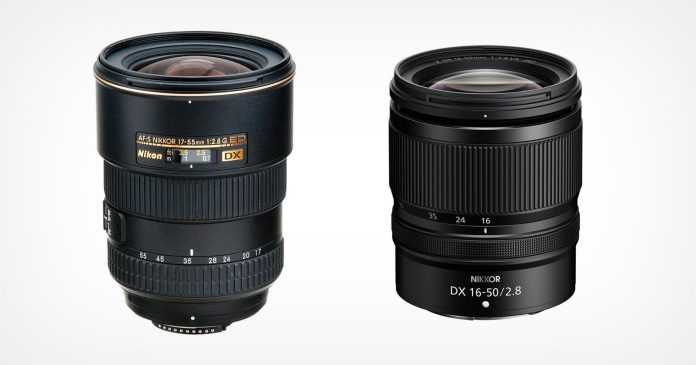![]()
There has been a lot of big news in the photography space in the past month, so it’s perhaps not too surprising that Nikon’s pair of new APS-C lenses has flown a bit under the radar. That’s a shame because the Nikkor Z 16-50mm f/2.8 VR and Nikkor Z DX MC 35mm f/1.7 actually address a major complaint many have had about the Nikkor Z system: the lack of new high-end APS-C lenses.
Back in April, Nikon told PetaPixel that it wanted to launch its 50th Nikkor Z lens by next spring, prompting us to wonder what the Nikkor Z system is even missing. While there are some obvious contenders for optics missing from Nikon’s mirrorless family, including fast wide primes and specialty lenses like fisheye and tilt-shift (Perspective Control), we also wondered, “DX, where are you?”
“The Nikkor Z system has only a few APS-C lenses, all ‘kit’ lenses and all-in-one zooms except for the Nikkor Z DX 24mm f/1.7. There’s nothing wrong with Nikon’s current DX Nikkor Z lenses, and there’s no question that the overall photography market has shifted, reducing the relative popularity of APS-C cameras within the primarily full-frame Nikon Z system,” I wrote in April. “That said, it is hard not to miss the days of high-end APS-C Nikon DSLRs like the Nikon D300 and D500 and associated high-end DX lenses like the Nikon AF-S DX 17-55mm f/2.8G ED-IF and AF-S DX Nikkor 35mm f/1.8G.”

The problem has long been that photographers using Nikon’s APS-C cameras had to choose between relatively slow Nikkor Z DX lenses with lower image quality or buying full-frame glass they don’t need, which almost always means a larger, heavier overall kit. Why can’t Nikon Z owners with APS-C cameras have it all?
Barely more than half a year after my moaning, Nikon has shut me up. In fact, Nikon launched precisely what I asked for: a 24-70mm f/2.8 equivalent DX zoom and a 50mm equivalent fast prime.

I wish I could say I’m psychic or manifested Nikon’s new glass, but really, I just recognized something that many people who had Nikon APS-C DSLRs back in the day, like I did, would notice.
Even though the new Nikkor Z DX lenses seem like obvious ones to make, Nikon still deserves a lot of credit. It filled a void it didn’t necessarily have to, and even did something some of its competitors haven’t. For example, Canon has just two RF-S (APS-C) lenses in its lineup, the RF-S 10-18mm f/4.5-6.3 IS STM and the RF-S 18-150mm f/3.5-6.3 IS STM, both slow zooms. Given that Canon begrudgingly opened its RF system to third-party lenses with autofocus, but only APS-C lenses, it seems the company has relatively little interest in filling the gap itself.
Sony, which has about 80 first-party E-mount lenses and the best third-party lens support of any company, has equivalent lenses to Nikon’s new pair, the E 16-55mm f/2.8 G and the E 35mm f/1.8 OSS. But Sony has the advantage of having been committed to mirrorless for well over a decade and having quite a few APS-C cameras in its system, including some very good ones.
Will Nikon’s pair of new Nikkor Z DX lenses move the needle for all Nikon photographers? No, surely not. However, that doesn’t mean that DX glass should be ignored, as it had been until just last month, since Nikon launched its first APS-C Z camera, the Z50, back in 2019. Nikon has righted a wrong here, and the company deserves kudos for it. Newer cameras like the Nikon Z50 II and Zfc are fantastic for beginner and enthusiast photographers, and now people who have them can use great, uncompromising APS-C glass.








